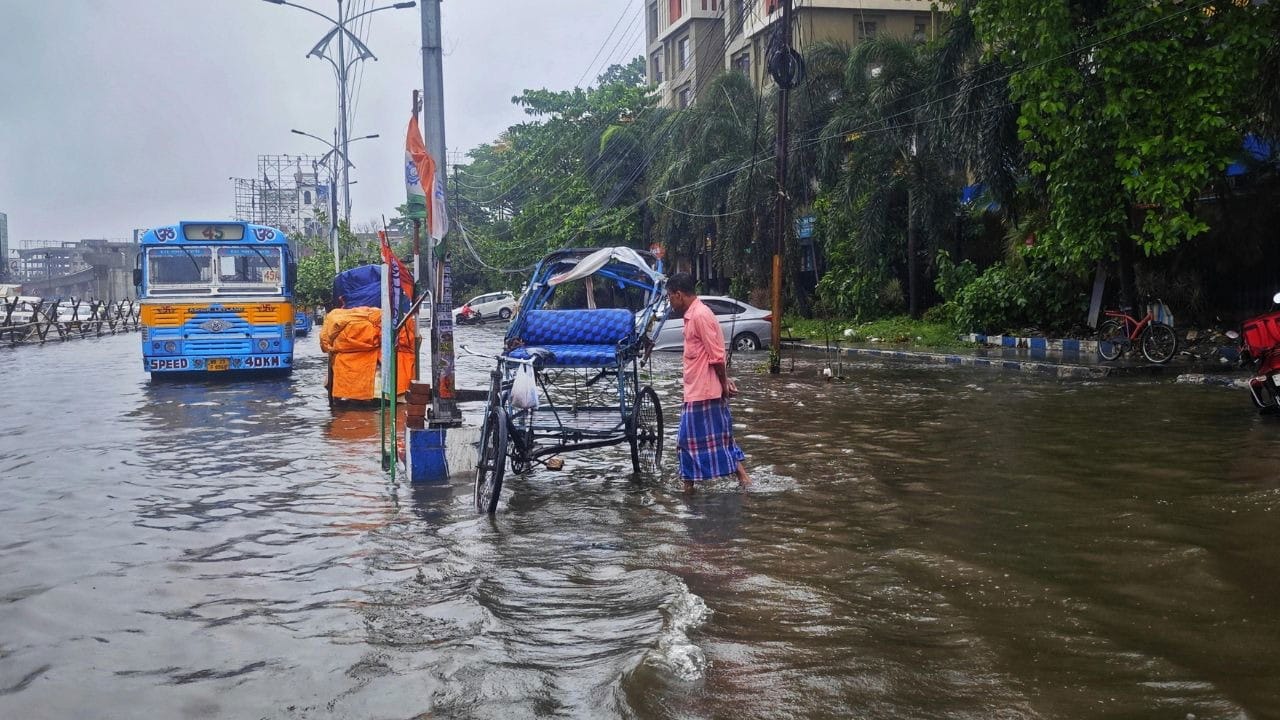As monsoon intensifies across North India, the Indian Meteorological Department (IMD) has issued a heavy rain alert for Punjab, warning residents to brace for significant rainfall, thunderstorms, and potential flooding. This comes as part of a larger weather pattern affecting several northern states, prompting advisories for emergency preparedness.
Here’s a detailed overview of the current weather situation in Punjab, district-wise alerts, likely impacts, safety tips, and expert recommendations.
Punjab Weather Update: What’s Happening?
The Southwest Monsoon, having advanced into most parts of Northern India, is now active over Punjab, leading to widespread rainfall since last week. The IMD has forecast heavy to very heavy rainfall across several districts of the state over the next 48–72 hours.
According to the IMD’s latest bulletin:
- Thunderstorms with lightning and gusty winds (30-40 km/h) are likely.
- Localized heavy rainfall, exceeding 100mm in some areas, is expected.
- Urban flooding and waterlogging in low-lying areas cannot be ruled out.
This heavy spell is attributed to:
- A cyclonic circulation over northwest India.
- Strengthening monsoon currents from the Bay of Bengal.
Districts Under Heavy Rainfall Alert
The IMD has placed several districts in Punjab under Red and Orange alerts for the coming days. Areas likely to be most affected include:
- Red Alert Districts (Severe Warning):
- Pathankot
- Gurdaspur
- Hoshiarpur
- Nawanshahr
- Ropar (Rupnagar)
- Orange Alert Districts (Be Prepared):
- Amritsar
- Ludhiana
- Jalandhar
- Mohali (SAS Nagar)
- Fatehgarh Sahib
- Yellow Alert Districts (Watch and Stay Updated):
- Patiala
- Bathinda
- Ferozepur
- Mansa
- Sangrur
Authorities are advising residents of Red Alert districts to avoid non-essential travel and prepare for possible disruptions.
Likely Impacts of Heavy Rainfall in Punjab
The IMD has cautioned about multiple hazards linked to the current rainfall pattern, including:
1. Urban Flooding:
Heavy rains combined with poor drainage systems in cities like Ludhiana, Amritsar, and Jalandhar could lead to severe waterlogging.
2. Rural Area Inundation:
Farms and low-lying villages may experience localized flooding, potentially damaging standing crops and property.
3. Landslides in Foothill Regions:
Districts near the Shivalik Hills like Hoshiarpur and Ropar are at risk of minor landslides due to saturated soil.
4. Traffic Disruptions:
Flooded roads, fallen trees, and power outages could disrupt vehicular movement across highways and city roads.
5. Health Hazards:
Rise in waterborne diseases such as cholera and dysentery is possible due to stagnant water and hygiene challenges.
Safety Advisory from the Punjab Government
The Punjab State Disaster Management Authority (PSDMS) has issued the following guidelines:
- Stay indoors during thunderstorms and heavy rainfall.
- Avoid waterlogged areas and open fields during lightning.
- Keep emergency kits and drinking water stocked.
- Unplug electrical appliances during lightning storms.
- Farmers should ensure safe storage of harvested crops.
Local authorities, including district administrations, have set up emergency helplines and control rooms to monitor flood-prone areas.
Rainfall Prediction for the Coming Days
According to the IMD forecast:
- July 23–24: Heavy to very heavy rain in northern Punjab districts.
- July 25–26: Intense rainfall likely in central Punjab.
- July 27 onwards: Gradual decrease in rainfall intensity but scattered showers to continue.
Punjab’s Seasonal Rainfall Status
As per IMD’s monsoon report:
- Punjab’s cumulative rainfall since June has now exceeded the seasonal average by 12%.
- Major reservoirs are witnessing rising water levels, but they remain within the safe zone.
This surplus rain, while beneficial for kharif crops like paddy, could harm agriculture if flooding persists.
Precautions for Travelers and Commuters
If you’re planning to travel within Punjab:
- Check IMD updates regularly via https://mausam.imd.gov.in/
- Use navigation apps to track roadblocks and flooded routes.
- Avoid rural roads after dark due to poor visibility and potential flooding.
- Ensure your vehicle has adequate fuel and emergency supplies.
What Makes This Monsoon Intense in Punjab?
Meteorologists attribute the current heavy rainfall to:
- Strengthened southwest monsoon winds from the Bay of Bengal.
- Cyclonic circulation near the northwest plains.
- The Western Disturbance that has interacted with monsoon currents.
This confluence is amplifying rainfall intensity across Punjab and neighboring states like Haryana and Himachal Pradesh.
How Farmers Are Coping
Punjab’s farmers are adapting by:
- Draining excess water from fields wherever possible.
- Protecting young saplings and nursery beds.
- Using submersible pumps to save standing crops.
The Agriculture Department has issued advisories to minimize crop loss and ensure timely sowing where fields remain unaffected.
Helpline Numbers for Punjab Flood Emergencies
The government has activated 24×7 control rooms. Important helpline numbers include:
- State Control Room: 0172-2740860
- Emergency Toll-Free: 1070
- District Disaster Management Units: Available district-wise via Punjab State Disaster Management Authority website.
Expert Comments
According to Dr. K.S. Sandhu, a meteorologist at Punjab Agricultural University:
“Such intense rainfall during July can be both a boon and bane. While water availability for crops is ensured, waterlogging poses a serious risk to paddy fields and urban infrastructure. Monitoring weather updates is essential.”
Conclusion: Stay Alert and Prepared
With the monsoon in full swing, the heavy rain alert in Punjab calls for caution. While rainfall is essential for agriculture, excessive rains threaten normal life through flooding and infrastructure disruptions. Residents are advised to remain updated via IMD’s official bulletins and local news agencies.
Proactive measures like safeguarding property, avoiding unnecessary travel, and following official advisories will help minimize risks during this heavy rainfall period.
FAQs
Q. How long will the heavy rainfall continue in Punjab?
A. IMD forecasts heavy to very heavy rain until July 27, after which rainfall intensity is expected to reduce.
Q. Which areas are most at risk in Punjab?
A. Pathankot, Gurdaspur, Hoshiarpur, and Ropar districts are under Red Alert.
Q. What precautions should farmers take?
A. Drain excess water from fields, protect saplings, and follow agriculture department advisories.
Q. Where can people get real-time weather updates?
A. Visit https://mausam.imd.gov.in/ for live updates from IMD.










